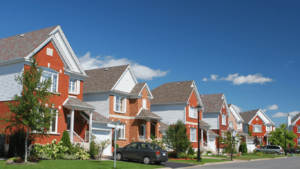The relationship between green spaces, public parks, and real estate values is a subject of increasing interest in Canadian cities. As urban populations grow and the demand for residential properties rises, the presence of well-maintained public parks and green spaces is becoming a significant factor influencing real estate values.
In major Canadian cities like Toronto, Vancouver, and Montreal, studies have shown a positive correlation between the proximity to green spaces and the value of residential properties. Properties located near parks and green areas tend to have higher market values compared to those in more built-up areas. This phenomenon is attributed to several key factors.
Firstly, green spaces offer aesthetic and recreational benefits that enhance the quality of life for residents. Parks provide a natural escape from the urban environment, offering opportunities for outdoor activities, relaxation, and social interaction. These amenities are particularly appealing in densely populated urban areas, where private outdoor spaces are limited.
Furthermore, green spaces contribute to environmental health, which in turn impacts property values. They play a crucial role in improving air quality, reducing urban heat islands, and supporting biodiversity. Parks and green areas also serve as essential catchment areas for rainwater, reducing the risk of flooding and associated damage to properties.
The psychological benefits of green spaces cannot be overlooked. Proximity to nature has been linked to reduced stress levels, improved mental health, and overall well-being. These factors are increasingly considered by homebuyers and renters, who value a healthy living environment.
Real estate developers and city planners in Canada are recognizing the importance of integrating green spaces into urban designs. New developments are increasingly incorporating parks, community gardens, and green belts. This trend not only enhances the appeal of residential areas but also contributes to sustainable urban development.
However, the impact of green spaces on property values also raises concerns about affordability and access. As property values near parks rise, there is a risk of gentrification, potentially displacing lower-income residents. Addressing these challenges requires thoughtful urban planning and policies that ensure equitable access to green spaces for all city residents.
The presence of green spaces and public parks plays a crucial role in shaping the real estate market in Canadian cities. As urban areas continue to evolve, the integration of nature into the urban fabric will remain a key factor in determining the desirability and value of residential properties. This trend underscores the need for balanced urban development strategies that prioritize both environmental sustainability and social equity.





